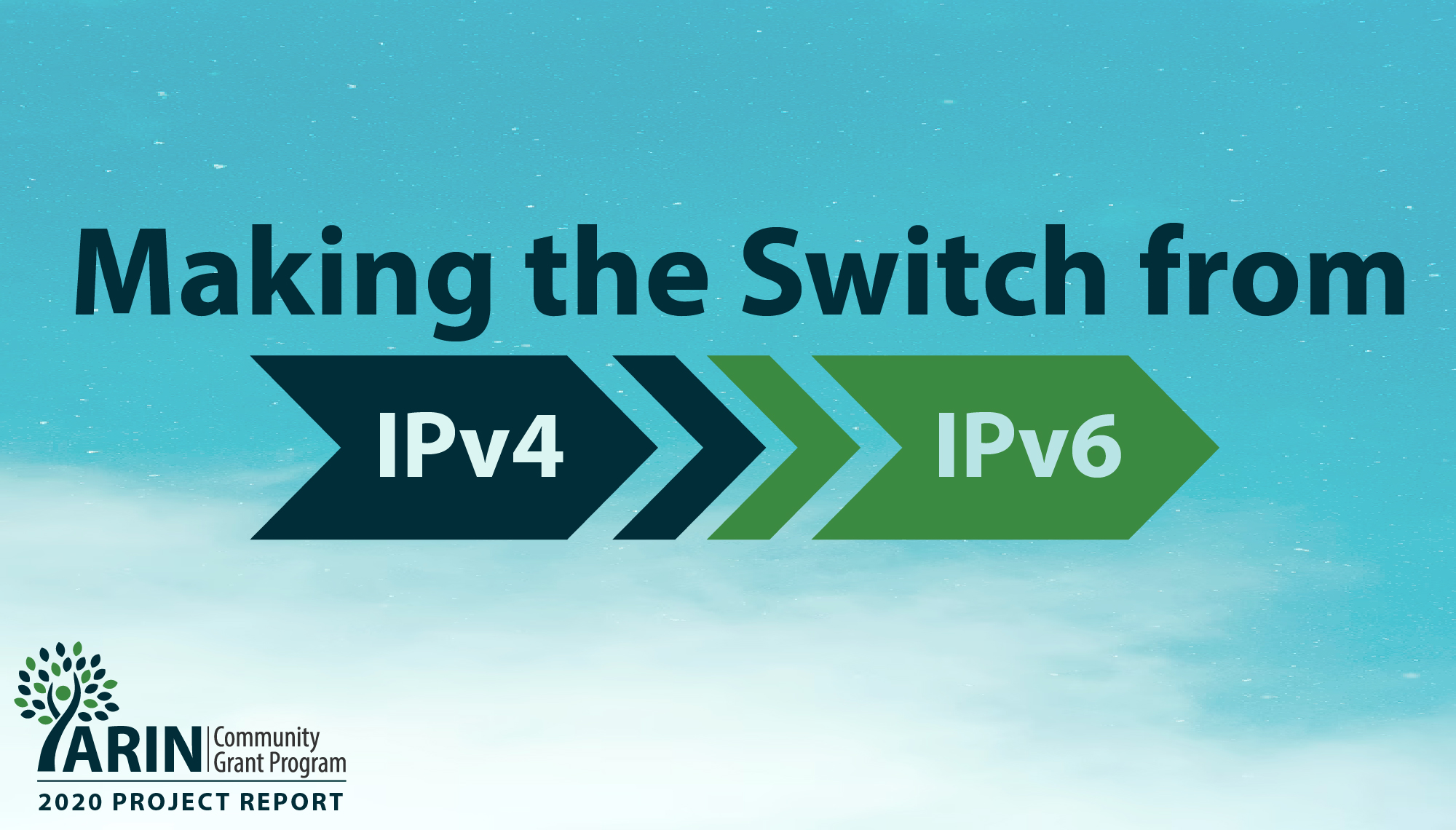
Enterprise IPv4 to IPv6: Making the Switch
ARIN Community Grant Program Recipient Report
When it comes to IPv6 adoption, I think many people are frustrated at what feels like the lack of progress so far, but it’s important to remember that it can be tough for many large organizations to make the switch. The Industry Network Technology Council tackles some of the issues enterprises face when it comes time to implement IPv6 and has received two ARIN Community Grants to help take on the challenge.
Overview
IPv6 adoption among enterprises with private, managed networks has lagged over the past decade. However, now in the United States, there is a federal mandate for government agencies to convert to IPv6 which I expect to help speed things along. Over the past year, The Industry Network Technology Council created and began administering surveys to try to pinpoint why enterprise IPv6 adoption is slow. We found that many organizations feel that application conversion, security and training were the top three concerns related to IPv6 adoption.
For many large enterprises, the big problem in the transition from IPv4 to IPv6 is due to the internal procedures IT and network departments have put into place. For example, IP addresses are often coded into scripts or routines, so the number of changes required to shift to IPv6 from IPv4 in terms of operational impact is quite large. In September, we wrote a blog on the top 10 considerations for application conversion in regards to IPv4 to IPv6. We appreciate everyone who responded to our survey, and are excited to share the preliminary results.
Roughly 30 enterprises answered the call for our survey. We were lucky to get a variety of enterprise network sizes — from over 100,000 network devices to less than 10,000 network devices — to share with us their network setups and their biggest challenges in transitioning to IPv6.

One thing we found particularly interesting is how many enterprise organizations have homegrown applications or programs, which may pose a challenge to convert from IPv4 to IPv6 depending on the structure. Nearly half of respondents have between 1 and 100 custom-built applications, with another 1/3 of respondents reporting more than 100. The cost or feasibility of application conversion is highest for applications which the enterprise has written themselves and are stand-alone programs. Such programs can provide great functional value or even give a business advantage; however, they may take some time to convert from IPv4 to IPv6 due to the following reasons:
- the format and length of the IPv4 address and IPv6 address are different
- the socket structure is different
- the number and type of interfaces are different
- loopback addresses are different
- inaddr_any (listening on all interfaces may lead to undesired / unexpected results)
- DNS resolution commands are different
This is a common thread for many of our respondents: their current workflow and setup is not currently built for an easy conversion. Most of our respondents cited issues with changing embedded IP addresses, working with external clients and vendors, and controlling their disaster recovery/backup sites.

Based on the survey results so far, we fear that there is no silver bullet solution for enterprise IPv6 conversion. That being said, if you have a private, managed IP network, we’d love for you to fill out the survey so we can have a larger sampling size and continue to address the major concerns. The more responses we receive, the more we can spot patterns, and the easier it will be to tackle a one-size-fits-all solution for IPv6 conversion. We also invite you to take our survey on IPv6 Security as well so we can help by writing best practices or strategies for the issues that many organizations face.
Benefits to the ARIN region
Knowing all of this information, INTC hosted a multi-month IPv6 webinar series this year for enterprise clients in conjunction with ARIN’s fellow RIR, APNIC. We had nearly 1,000 attendees, including over 500 from the ARIN region, and we’re hoping to deliver more in the future.
The bottom line is that it will likely take many years for enterprise organizations to completely switch from an IPv4-only network to an IPv6-only network. Providing support for those teams is paramount to helping make the switch.
What’s next for the INTC?
Enterprise organizations will be publicly speaking at future INTC webinars about their transition to IPv6 in order to help support this effort. As well, a major US federal government agency has agreed to join the Enterprise Advisory Council of the INTC, which helps guide the training and other efforts. The government agency is particularly interested in IPv6 training.
We’ll be promoting more webinars in the future as well as case studies from organizations who have deployed IPv6. If your organization has begun or completed the transition from IPv4 to IPv6 and would like to present it as a case study, visit our website to learn more.
About the ARIN Community Grant Program
ARIN provides financial grants in support of initiatives that improve the Internet industry and user environment. Since its launch in 2019, ARIN has funded 15 projects. Visit the ARIN Community Grant Program page for more information and to find out how your organization can apply in 2022.
Recent blogs categorized under: Grant Program
GET THE LATEST!
Sign up to receive the latest news about ARIN and the most pressing issues facing the Internet community.
SIGN ME UP →Blog Categories
RPKI • Updates • Outreach • Internet Governance • Grant Program • Tips • IRR • IPv6 • Public Policy • Caribbean • Elections • ARIN Bits • Fellowship Program • Training • Security • Guest Post • Data Accuracy • Business Case for IPv6 • IPv4 • Customer Feedback



